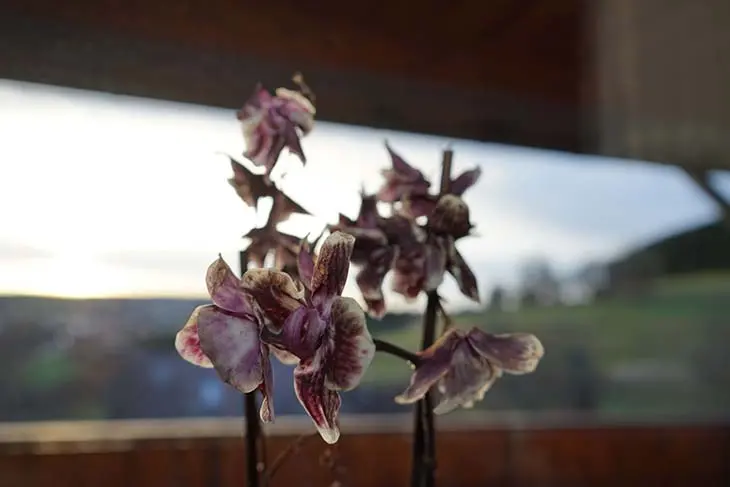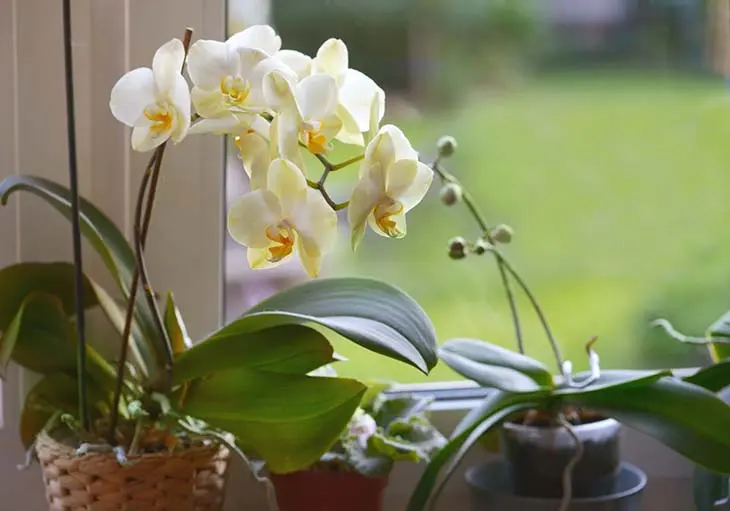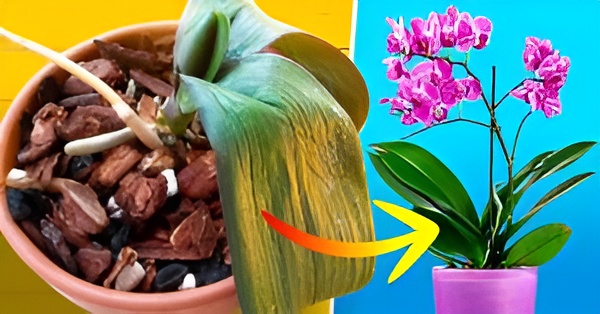Orchids are perennial tropical flowers that are easy to grow indoors. The orchid family is the most diverse and rich. There are almost 25,000 species.
The best known and commercialized variety is the Phalaenopsis orchid, which is also called the butterfly orchid because of the shape of its flowers.
Although an orchid is easy to care for, it can wilt if not cared for properly. However, it is still possible to save it. Find out how to revive a dying orchid.
The orchid is a tropical plant that appreciates light and humidity. Although this flowering plant is easy to care for, it can die from lack of water or overwatering. In both cases, it is possible to revive your plant in just a few minutes.
How do you save a dying orchid?

Before attempting to save your orchid, it is important to determine the origin of the problem. To do this, check the appearance of your plant.
If the roots are rotting, it means you have watered your orchid too much. On the other hand, if the petals are falling off or the leaves are turning yellow, it means your plant is dry.
After determining the cause of the problem, prune your plant to remove damaged parts such as dry stems at the base and faded flowers.
Saving a dried orchid
If your orchid has dried out due to insufficient watering or direct sunlight, you can save it by watering it thoroughly.
To do this, place your potted plant in a basin of water for about 10 minutes so that the roots are completely submerged. This will refresh the roots and the soil. Then remove the pot from the bowl and let it drain.
Protecting an orchid from overwatering
To prevent your orchid from overwatering, allow the potting soil to dry first and then check the appearance of the roots for rotten roots.
These are soft, brown and can give off a bad smell. Rotten roots can then turn white and then die. To revive your plant, take it out of the pot and remove any soil clinging to the roots.
Cut diseased roots at the base with disinfected garden shears to prevent rot from spreading to the rest of the plant. Then repot your orchid into a new pot, using pine bark-based potting soil to promote drainage.
It is advisable to choose a pot with drainage holes so that excess water can drain away after each watering. Submerge your potted houseplant in a basin of water to ease the shock of repotting.
How do you successfully grow an orchid?

The orchid is a tropical plant that appreciates humidity. However, do not place your plant near heat sources that dry out the surrounding air, such as a radiator.
You can also mist the foliage once a day to maintain a humid atmosphere around the plant. This flowering plant also appreciates light but is afraid of heat.
Choose partial shade for your plant. To grow your orchid successfully, it is important to pay attention to watering your plant. Generally, the orchid should be watered once a week in spring and summer and every two weeks in autumn and winter.
In addition, when the orchid enters a resting phase, it is important to space out the waterings. However, before watering your plant, you should check the condition of the soil. If it is still wet, there is no need to water it. Wait until it is drier.
Note that orchids appreciate water that is free of lime, such as rainwater or filtered water. You should also water your tropical orchids with water that is at room temperature to avoid damaging their root system, and be sure to remove standing water from the saucer or planter.
To avoid excess moisture that could kill your orchid, consider placing clay balls on the bottom of the pot to promote drainage.
It is best to use a transparent pot so that the roots can capture the light. This makes it possible to check the condition of the roots regularly to determine the needs of your plant.
To promote the growth and flowering of your orchid, you can fertilize it with a special orchid fertilizer without overdosing.
This also needs to be diluted sufficiently. Choose a nitrogen fertilizer during leaf growth and a potassium-rich fertilizer during flowering.
In fact, nitrogen promotes the development of the green parts of the plant, such as stems and leaves, while phosphorus stimulates the formation of seeds and flowers, so it is important to alternate between the two.
Thanks to these simple measures, you can save your dying orchid and once again enjoy beautiful blooms that will enhance your interior.

